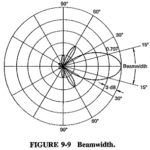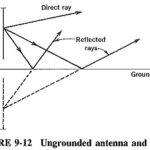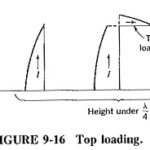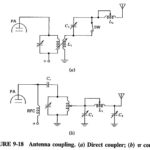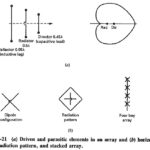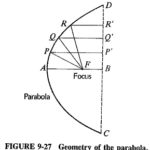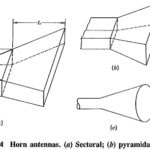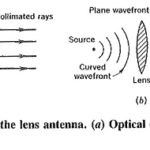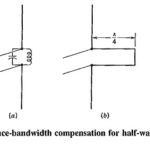Antennas in Electronic Communication Articles:
Antenna Definition: The Antenna Definition is a quick review of impedance matching (basic transformer theory) and resonant circuits. It was pointed out that maximum power transfer could be achieved only when the source matched the load. The antenna must have the … (Read More)
Antenna Characteristics: The following Antenna Characteristics isolated from surfaces which will alter or change their radiation patterns and efficiency. Current and Voltage Distribution: When an RF signal voltage is applied at some point on an antenna, voltage and current will result at that … (Read More)
Radiation Pattern of Antenna: The important terms and definitions used in connection with antennas and their Radiation Pattern of Antenna are Antenna Gain and Effective Radiated Power: Certain types of antennas focus their Radiation Pattern of Antenna in a specific direction, as compared … (Read More)
Effects of Ground on Antenna Performance: The Effects of Ground on Antenna Performance on a detailed discussion of the interaction (see Figure 9-11). Ungrounded Antennas: As was know, when a radiation source is placed near a reflecting surface, the signal received at any distant … (Read More)
Effects of Antenna Height: At low and medium frequencies, where wavelengths are long, it often becomes impracticable to use an antenna of resonant length. The vertical antennas used at those frequencies are too short electrically. The Effects of Antenna Height are Top loading: The … (Read More)
Antenna Coupling: Low and medium frequency antennas are the ones least likely to be of resonant effective height and are therefore the least likely to have purely resistive input impedances. This precludes the connection of such an antenna … (Read More)
Directional High Frequency Antenna: Directional High Frequency Antenna are likely to differ from lower-frequency ones for two reasons. These are the HF transmission/reception requirements and the ability to meet them. Since much of HF communication is likely to be point-to-point, the … (Read More)
Parabolic Antenna: The Parabolic Antenna is a plane curve, defined as the locus of a point which moves so that its distance from another point (called the focus) plus its distance from a straight line (directrix) is constant. These geometric properties … (Read More)
Horn Antenna Design: As we know, a waveguide is capable of radiating energy into open space if it is suitably excited at one end and open at the other. This radiation is much greater than that obtained … (Read More)
Lens Antenna Design: The paraboloid reflector is one example of how optical principles may be applied to microwave lens antenna, and the Lens Antenna is yet another. It is used as a collimator at frequencies well in excess of 3 GHz … (Read More)
Wideband Antenna Types: It is often desirable to have an antenna capable of operating over a wide frequency range. This may occur because a number of widely spaced channels are used, as in short-wave transmission or reception, or because only one … (Read More)
